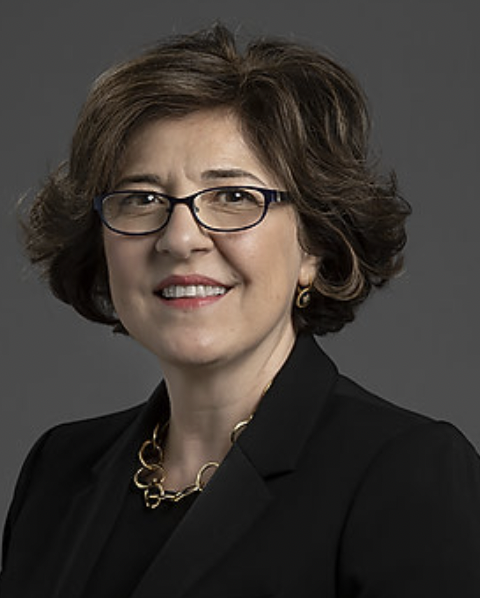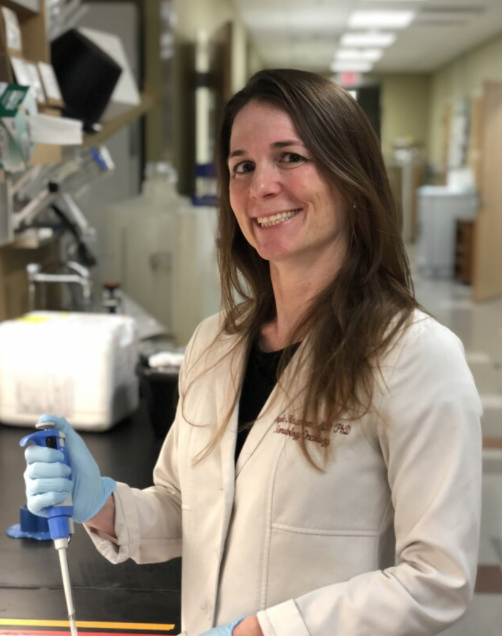– Navitoclax is being studied in myelofibrosis, a rare, difficult-to-treat blood cancer
– Results are from an exploratory analysis of 34 myelofibrosis patients who received at least one dose of navitoclax in combination with ruxolitinib after suboptimal response or disease progression with ruxolitinib monotherapy
– Median overall survival was not reached for patients who had a ≥ 1 grade improvement in bone marrow fibrosis or ≥ 20% variant allele frequency reduction
– At the time of analysis with > 2 year follow up the survival estimate was 100% in patients who had improvements in bone marrow fibrosis or variant allele frequency
– Results were presented at the American Association for Cancer Research annual meeting
NORTH CHICAGO, Ill., April 12, 2022 /PRNewswire/ — AbbVie (NYSE: ABBV) today announced new data from a Phase 2 trial of navitoclax in combination with ruxolitinib in patients with myelofibrosis. The results were presented at the American Association for Cancer Research annual meeting (AACR 2022, abstract #LB108). Navitoclax is an investigational, first-in-class, oral BCL-XL/BCL-2 inhibitor that is designed to activate programmed cell death (apoptosis) in cancer cells. Navitoclax and its safety and efficacy are under evaluation as part of ongoing Phase 2 and registrational Phase 3 studies.
“Myelofibrosis is a cancer that originates in the bone marrow, leading to fibrosis. Currently, available therapies do not address the underlying disease biology and have not shown a consistent effect on both biomarkers of disease modification and overall survival. Disease control with reversal of bone marrow fibrosis is a key objective for improving patient outcomes,” said Mohamed Zaki, M.D., Ph.D., vice president and global head of oncology clinical development at AbbVie. “That’s why we are especially pleased about these early results of navitoclax in combination with ruxolitinib that indicate its novel mechanism of action of inducing cell death may cause reversal of bone marrow fibrosis and extend survival for patients who respond to treatment.”
Myelofibrosis is a rare, difficult-to-treat blood cancer that results in excessive scar tissue formation (fibrosis) in the bone marrow. Anti-fibrosis activity, measured by reversal of bone marrow fibrosis (BMF) and reduction in driver gene variant allele frequency (VAF) have been suggested as potential biomarkers to measure disease modification in myelofibrosis, but their association with a survival benefit have not been widely described.1 These data build on AbbVie’s history of transforming standards of care in blood cancers with significant unmet needs.
The results presented at AACR 2022 were from REFINE (NCT03222609) – a Phase 2 trial evaluating navitoclax in combination with ruxolitinib (a JAK1/2 inhibitor), which included patients with myelofibrosis who had progressed on or had a suboptimal response to at least 12 weeks of ruxolitinib monotherapy. Median exposure to prior ruxolitinib was 91 weeks (range: 19 weeks – 391 weeks) in the first 34 patients enrolled earlier in the trial.
In the exploratory analysis of 32 patients who were evaluable for improvements in BMF, 12 (38%) had a ≥1 grade improvement during any time point in the study. For driver gene VAF reduction, 26 patients were evaluable and 6 (23%) achieved a ≥20% reduction at week 24. Five patients achieved both BMF and VAF responses.
Median overall survival (OS) for all patients was not reached as presented previously by Harrison2 et al. For patients who had a ≥1 grade improvement BMF median OS was not reached compared with 28.5 months for patients who did not experience an improvement. Similarly, median OS was also not reached for patients who achieved a ≥20% driver gene VAF reduction versus 28.5 months for patients who did not.
All 34 patients (100%) experienced at least one adverse event (AE), and 15 (44%) experienced a serious adverse event (SAE).2 The most common AEs of any grade were thrombocytopenia (n= 30, 88%), diarrhea (n= 24, 71%), fatigue (n= 21, 62%), and nausea (n= 13, 38%). The most common SAEs were pneumonia (n= 4, 12%) and splenic infarction (n= 2, 6%).2 There were no SAEs of bleeding and thrombocytopenia was manageable and reversible with dose reduction/interruption of navitoclax and/or ruxolitinib.2 REFINE was a dose-finding study and the target dose of navitoclax was reduced subsequent to these findings.
“Data obtained from this exploratory analysis holds promise for potential future clinical research,” said Jacqueline S. Garcia, M.D., Dana-Farber Cancer Institute, assistant professor of medicine at Harvard Medical School. “What is most notable in this analysis is the overall survival among patients who demonstrate VAF and BMF responses and all patients were alive at time of analysis. Patients in this Phase 2 trial had suboptimal response to ruxolitinib at time of study entry and then had navitoclax added to ruxolitinib on the trial. VAF and BMF responses occurred despite the presence of high molecular risk mutations, which suggests the potential efficacy of combination navitoclax and ruxolitinib could be independent of underlying risk factors.”
Read more

 Dr Jamile Shammo
Dr Jamile Shammo studies molecular mechanisms leading to cancer, blood diseases, sickle cell anemia, hemophilia and other coagulopathies.
studies molecular mechanisms leading to cancer, blood diseases, sickle cell anemia, hemophilia and other coagulopathies. Dr. Angela Fleischman
Dr. Angela Fleischman Dr. Catriona Jamieson
Dr. Catriona Jamieson Dr. Nicole Kucine
Dr. Nicole Kucine